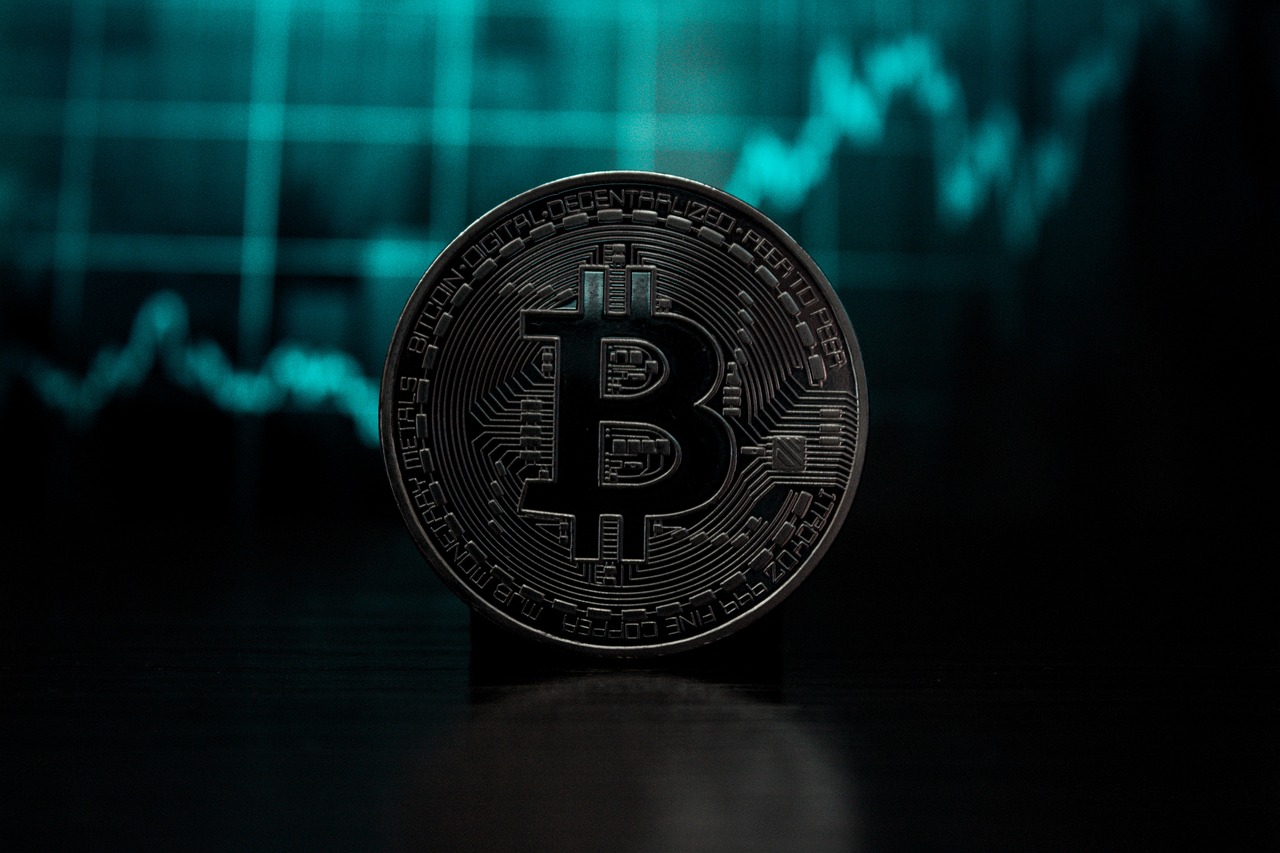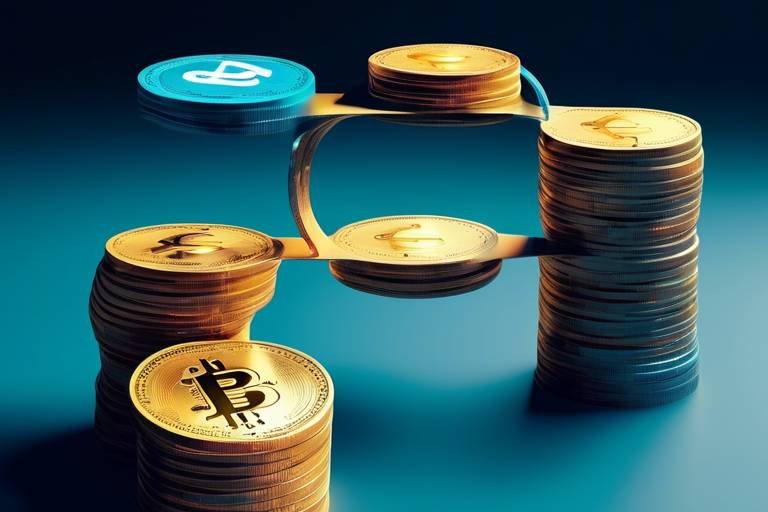Curve Finance - Liquidity Pools for Stablecoins
In the ever-evolving world of decentralized finance (DeFi), Curve Finance stands out as a specialized decentralized exchange (DEX) tailored for stablecoins. Imagine a bustling marketplace where traders can seamlessly swap their stable digital currencies without the fear of price volatility. That's exactly what Curve Finance offers! By focusing on stablecoins, it not only enhances trading efficiency but also provides liquidity providers with an opportunity to earn rewards. But what makes Curve Finance so unique? Let’s dive deeper into its features, benefits, and its pivotal role in the DeFi ecosystem.
At its core, Curve Finance is designed to optimize the trading of stablecoins, which are cryptocurrencies that aim to maintain a stable value relative to a fiat currency, like the US dollar. This focus allows Curve to minimize slippage— the difference between the expected price of a trade and the actual price— making it a go-to platform for users looking to trade stablecoins efficiently. The architecture of Curve Finance is built on liquidity pools, which are collections of funds locked in smart contracts that facilitate trading on the platform. These pools are not just a technical necessity; they are the lifeblood of Curve Finance, allowing users to trade with minimal friction and maximizing the utility of their assets.
One of the most compelling aspects of Curve Finance is its ability to provide users with a variety of liquidity pools that cater to different stablecoins. This diversity is not merely for show; it plays a critical role in ensuring that users can find the best rates for their trades. By aggregating liquidity across multiple pools, Curve Finance effectively creates a robust trading environment that benefits both traders and liquidity providers alike. In this sense, it acts like a bridge, connecting various stablecoin ecosystems and allowing for a more fluid exchange of value.
As we explore the functionalities of Curve Finance, it’s essential to understand that the platform is not just about trading. It’s about creating an ecosystem where users can engage in liquidity provisioning, earning passive income by supplying their stablecoins to the pools. This process is akin to depositing money in a savings account, where you earn interest over time. However, the potential returns in Curve Finance can be significantly higher, making it an attractive option for those looking to maximize their crypto assets.
In summary, Curve Finance represents a significant innovation in the DeFi space, providing a dedicated platform for stablecoin trading through its unique liquidity pools. As we delve further into this article, we will uncover the mechanics behind liquidity pools, the importance of stablecoins, and the myriad benefits that Curve Finance offers to its users. So, buckle up as we embark on this journey through the fascinating world of Curve Finance and its liquidity pools for stablecoins!
- What is Curve Finance? - Curve Finance is a decentralized exchange specifically designed for stablecoin trading, focusing on low slippage and efficient transactions.
- How do liquidity pools work? - Liquidity pools are collections of funds that users provide to facilitate trading on the platform, allowing for seamless exchanges between stablecoins.
- What are stablecoins? - Stablecoins are cryptocurrencies that are pegged to a stable asset, like the US dollar, to minimize price volatility.
- How can I earn rewards on Curve Finance? - Users can earn rewards by providing liquidity to the pools, similar to earning interest on a savings account.
- What risks are involved in liquidity provisioning? - While there are potential rewards, risks include impermanent loss and market volatility, which users should be aware of before participating.

Understanding Liquidity Pools
Liquidity pools are the backbone of decentralized finance (DeFi), acting as reservoirs of capital that facilitate trading without the need for traditional order books. Imagine a swimming pool filled with various cryptocurrencies, where users can dive in and out freely, exchanging assets with ease. In essence, liquidity pools allow users to provide their assets to the pool, which can then be used by others for trading. This not only enhances the trading experience but also ensures that there is always enough liquidity available for transactions.
At Curve Finance, liquidity pools are designed specifically for stablecoins, which are cryptocurrencies pegged to stable assets like the US dollar. This unique focus helps to minimize price volatility and slippage, making Curve an attractive platform for users who want to trade stablecoins efficiently. The way it works is simple: users deposit their stablecoins into a liquidity pool and, in return, they earn a share of the transaction fees generated from trades that occur within that pool. This creates a win-win situation where traders can execute trades quickly, and liquidity providers earn passive income.
The significance of liquidity pools cannot be overstated. They allow for:
- Instant Transactions: Users can swap stablecoins instantly without waiting for buyers or sellers.
- Reduced Slippage: Because of the high liquidity, the difference between the expected price of a trade and the actual price is minimized.
- Passive Income: Liquidity providers earn fees simply by contributing to the pool, making it an attractive investment.
Furthermore, liquidity pools help stabilize the market by ensuring that there is always enough liquidity for trades to occur. This is particularly important in the volatile world of cryptocurrencies, where prices can fluctuate wildly. By allowing users to trade stablecoins with minimal friction, Curve Finance plays a crucial role in enhancing the overall efficiency and effectiveness of the DeFi ecosystem.
In summary, liquidity pools are essential for the functionality of decentralized exchanges like Curve Finance. They provide a seamless trading experience, reduce costs associated with slippage, and empower users to earn rewards while contributing to the liquidity of the market. As the DeFi landscape continues to evolve, understanding the dynamics of liquidity pools will be key for anyone looking to navigate this exciting space successfully.

The Role of Stablecoins
In the ever-evolving landscape of cryptocurrency, stablecoins have emerged as a vital pillar that supports the entire ecosystem. Unlike traditional cryptocurrencies, which can experience wild price fluctuations, stablecoins are designed to maintain a stable value. This stability is crucial for users who want to engage in transactions without the fear of sudden losses. Imagine trying to buy a cup of coffee with Bitcoin, only to find out that its value has plummeted overnight. That’s where stablecoins come into play, providing a safe haven for traders and investors alike.
Stablecoins serve multiple roles within the decentralized finance (DeFi) space, acting as a bridge between the volatile world of cryptocurrencies and the more stable realm of fiat currencies. They allow users to transact, lend, and borrow without the constant worry of market volatility. In Curve Finance, stablecoins facilitate seamless transactions, making it easier for users to swap one asset for another with minimal slippage. This is particularly important for liquidity providers, as it enhances their ability to earn returns without exposing themselves to unnecessary risks.
The importance of stablecoins can be illustrated with a few key functions they perform in Curve Finance:
- Liquidity Provision: Stablecoins attract liquidity providers who seek to earn fees from trading activities without the risks associated with volatile assets.
- Efficient Trading: Users can swap stablecoins quickly and efficiently, minimizing the cost of transactions and maximizing profits.
- Hedging Against Volatility: Traders can use stablecoins to hedge their positions, allowing them to exit volatile trades without converting back to fiat.
In essence, stablecoins are the lifeblood of Curve Finance and other DeFi platforms, enabling a smoother and more reliable trading experience. As the DeFi ecosystem continues to grow, the demand for stablecoins is likely to increase, further solidifying their role in the market. They not only provide stability but also enhance liquidity, making them indispensable for anyone looking to navigate the complex world of decentralized finance.
As we explore the various types of stablecoins in the next section, it's essential to understand that they come in different forms, each with its unique mechanisms and purposes. This diversity allows users to choose the stablecoin that best fits their needs, whether they prioritize security, decentralization, or ease of use. By leveraging these digital assets, Curve Finance continues to innovate and push the boundaries of what is possible in the DeFi space.

Types of Stablecoins
When diving into the world of decentralized finance (DeFi), understanding the different types of stablecoins is crucial. Stablecoins are digital currencies designed to maintain a stable value, which makes them an attractive option for traders and investors alike. They come in various forms, each serving a unique purpose within the DeFi ecosystem. The two primary categories of stablecoins are fiat-backed stablecoins and algorithmic stablecoins.
Fiat-backed stablecoins are directly pegged to traditional currencies, such as the US dollar or the euro. This means that for every stablecoin issued, there is an equivalent amount of fiat currency held in reserve. This backing provides a sense of security to users, as they can trust that their digital asset will maintain its value relative to the fiat currency. Popular examples of fiat-backed stablecoins include Tether (USDT), USD Coin (USDC), and TrueUSD (TUSD).
On the other hand, algorithmic stablecoins operate differently. They rely on complex algorithms and smart contracts to manage their supply and maintain price stability without being backed by any physical assets. This innovative approach allows these stablecoins to adjust their supply based on market demand, which can lead to greater volatility compared to their fiat-backed counterparts. Examples of algorithmic stablecoins include Ampleforth (AMPL) and DAI, which utilize unique mechanisms to stabilize their prices.
To summarize, here’s a quick comparison of the two types of stablecoins:
| Type | Mechanism | Examples |
|---|---|---|
| Fiat-Backed | Pegged to a fiat currency, backed by reserves | USDT, USDC, TUSD |
| Algorithmic | Utilizes algorithms to manage supply and demand | AMPL, DAI |
Both types of stablecoins play a pivotal role in platforms like Curve Finance, facilitating seamless transactions and providing liquidity to users. By understanding these categories, users can make informed decisions about which stablecoins to utilize based on their needs and risk appetite. Whether you’re looking for stability through fiat-backed options or exploring the innovative world of algorithmic solutions, the choice of stablecoin can significantly affect your DeFi experience.

Fiat-Backed Stablecoins
Fiat-backed stablecoins are a fascinating innovation in the world of cryptocurrency, designed to offer the best of both worlds: the stability of traditional currencies and the advantages of digital assets. These stablecoins are pegged to fiat currencies, such as the US Dollar or Euro, which means that their value is directly tied to the value of these currencies. This pegging mechanism provides a level of price stability that is essential for users who want to avoid the extreme volatility often associated with cryptocurrencies like Bitcoin or Ethereum.
One of the most well-known examples of a fiat-backed stablecoin is Tether (USDT). Tether claims to maintain a 1:1 peg with the US Dollar, meaning for every USDT in circulation, there is an equivalent amount of USD held in reserve. This assurance gives users confidence that their digital assets can be easily converted back into fiat currency whenever they choose. Other popular fiat-backed stablecoins include USD Coin (USDC) and TrueUSD (TUSD), each with its unique features and backing mechanisms, but all sharing the common goal of providing stability.
In the context of Curve Finance, fiat-backed stablecoins play a crucial role in enhancing liquidity pools. By allowing users to swap between different stablecoins with minimal slippage, Curve Finance creates an environment where traders can execute their transactions swiftly and at predictable prices. This is particularly beneficial for those looking to engage in arbitrage opportunities or for liquidity providers who want to maximize their returns without the fear of sudden price fluctuations.
Moreover, the integration of fiat-backed stablecoins into Curve Finance helps to attract a broader audience, including institutional investors who may be hesitant to engage with more volatile cryptocurrencies. The ability to transact in a stable environment fosters confidence and encourages more participants to join the DeFi ecosystem.
In summary, fiat-backed stablecoins serve as the backbone of many decentralized finance applications, including Curve Finance. They not only enhance liquidity and trading efficiency but also provide a safe haven for users looking to navigate the often-turbulent waters of the cryptocurrency market. As the DeFi space continues to evolve, the importance of these stablecoins cannot be overstated, and they will likely remain a pivotal component in the future of finance.

Algorithmic Stablecoins
Algorithmic stablecoins are a fascinating segment of the cryptocurrency landscape, operating on the principle of supply and demand rather than being backed by traditional assets. Unlike their fiat-backed counterparts, which are pegged to a specific currency like the US dollar, algorithmic stablecoins utilize complex algorithms to adjust their supply dynamically. This means that when the price of the stablecoin deviates from its target value, the algorithm automatically increases or decreases the supply to stabilize the price. Think of it as a smart thermostat for currency—constantly adjusting to maintain a comfortable temperature, or in this case, a stable value.
The allure of algorithmic stablecoins lies in their potential for decentralization and independence from traditional financial systems. They are designed to be self-sustaining and can operate without the need for collateral. This innovative approach not only provides flexibility but also introduces a level of resilience against market fluctuations. However, this doesn’t come without challenges. The mechanisms that govern these stablecoins must be robust enough to handle extreme market conditions. If the algorithm fails or is unable to react quickly enough, it could lead to significant price volatility, which is the very issue these coins aim to mitigate.
Here are some key characteristics of algorithmic stablecoins:
- Decentralization: They operate without a central authority, which can be appealing to those who value autonomy in the financial system.
- Dynamic Supply Adjustment: The supply is adjusted based on market conditions, allowing for a more responsive approach to maintaining stability.
- Potential for High Returns: Some algorithmic stablecoins offer yield farming opportunities, which can attract liquidity providers looking for better returns.
However, it’s essential to note that algorithmic stablecoins can be more volatile than their fiat-backed counterparts. The lack of collateral means that during times of market stress, the algorithms may struggle to maintain the peg, leading to potential losses for investors. For example, if a sudden surge in demand occurs, the algorithm must react swiftly to increase supply. If it fails to do so, the price may spike, causing panic among users and triggering a sell-off.
In the context of Curve Finance, algorithmic stablecoins play a crucial role in enhancing liquidity pools. They provide a unique opportunity for users to engage in trading with minimal slippage, as the algorithms work to maintain stability even during turbulent market conditions. This makes Curve Finance an attractive platform for both liquidity providers and traders looking for efficient and stable trading experiences.
In conclusion, while algorithmic stablecoins present exciting possibilities in the DeFi ecosystem, they also come with inherent risks. Understanding their mechanics and implications is vital for anyone looking to navigate this innovative segment of the cryptocurrency market.
- What are algorithmic stablecoins?
Algorithmic stablecoins are cryptocurrencies that maintain their value through supply and demand mechanisms rather than being backed by physical assets or fiat currencies.
- How do algorithmic stablecoins work?
These stablecoins use algorithms to automatically adjust their supply in response to market conditions, helping to stabilize their price.
- What are the risks associated with algorithmic stablecoins?
Risks include potential volatility during market stress and the possibility of algorithmic failure, which can lead to significant price fluctuations.

Benefits of Using Curve Finance
When it comes to decentralized finance (DeFi), Curve Finance stands out as a powerhouse for stablecoin trading. But what exactly are the benefits of using this platform? Let’s dive into the compelling reasons that make Curve Finance a go-to choice for many crypto enthusiasts and liquidity providers.
One of the most significant advantages of Curve Finance is its low slippage rates. Slippage occurs when the price of an asset changes between the time an order is placed and when it is executed. In traditional exchanges, this can lead to unexpected losses. However, Curve Finance is engineered to minimize slippage, especially when trading stablecoins, ensuring that users get the best possible rates. This is particularly beneficial for large transactions, where even a small percentage can translate into substantial amounts of money.
Additionally, Curve Finance offers efficient trading mechanisms that are tailored specifically for stablecoins. Unlike other decentralized exchanges that cater to a wider range of cryptocurrencies, Curve focuses on creating liquidity pools that optimize trades between stable assets. This specialization enhances the overall trading experience, making it quicker and more cost-effective. By using advanced algorithms and liquidity provision strategies, Curve ensures that users can execute trades with minimal fees and maximum efficiency.
Another noteworthy benefit is the opportunity for users to earn passive income through liquidity provision. By adding their stablecoins to Curve's liquidity pools, users can earn fees generated from trades that occur within those pools. This is an attractive feature for those looking to grow their crypto holdings without actively trading. The returns can often be higher than traditional savings accounts, making Curve Finance an enticing option for those seeking to maximize their investments.
Moreover, Curve Finance promotes a community-driven approach through its governance model. Users who hold Curve's native token, CRV, can participate in decision-making processes regarding protocol upgrades and changes. This not only empowers users but also fosters a sense of ownership and community within the platform. The more you engage with Curve, the more influence you have, which is a refreshing change from centralized exchanges that often operate behind closed doors.
Finally, the platform's security measures cannot be overlooked. Curve Finance employs robust security protocols to safeguard user funds and transactions. With the rise of hacks and scams in the crypto space, knowing that your assets are secure is paramount. Curve’s commitment to security helps build trust among its users, making it a reliable choice in the ever-evolving DeFi landscape.
In summary, Curve Finance offers a myriad of benefits that make it an attractive platform for both new and seasoned users. From low slippage and efficient trading to passive income opportunities and strong community governance, it’s clear why Curve has become a leader in the stablecoin exchange market.
- What is Curve Finance?
Curve Finance is a decentralized exchange designed specifically for stablecoin trading, focusing on providing low slippage and efficient transactions. - How do I earn rewards on Curve Finance?
You can earn rewards by providing liquidity to the pools on Curve Finance. Users receive a share of the transaction fees generated from trades within the pools. - What types of stablecoins can I trade on Curve Finance?
Curve Finance supports a variety of stablecoins, including popular options like USDC, USDT, DAI, and more. - Is Curve Finance safe to use?
Yes, Curve Finance employs robust security measures to protect user funds and transactions, making it a reliable choice in the DeFi space.

How to Participate in Curve Finance
Participating in Curve Finance is not only straightforward but also an exciting opportunity for anyone looking to dive into the world of decentralized finance (DeFi). If you're wondering how to get started, let me guide you through the essential steps to become a liquidity provider on this innovative platform. First and foremost, you’ll need to have some stablecoins in your crypto wallet. Stablecoins are the lifeblood of Curve Finance, and they allow you to contribute to liquidity pools effectively.
Once you have your stablecoins ready, the next step is to connect your wallet to the Curve Finance platform. This is typically done through popular wallets like MetaMask or Coinbase Wallet. After connecting your wallet, you can browse the various liquidity pools available on the platform. Each pool has its own unique characteristics, such as the types of stablecoins it supports and the associated fees. It’s crucial to do your homework here, as the right choice can significantly impact your returns.
Now, you might be asking yourself: "How do I choose the right pool?" Well, consider the following factors:
- Liquidity Depth: Pools with higher liquidity generally offer lower slippage, making your trades more efficient.
- Fees: Different pools have varying fee structures. Look for pools that offer competitive fees to maximize your earnings.
- Rewards: Some pools incentivize liquidity providers with additional token rewards, which can enhance your overall returns.
After selecting a pool that suits your preferences, it’s time to deposit your stablecoins. Simply choose the amount you wish to contribute and confirm the transaction. Once your stablecoins are deposited, you’ll receive liquidity provider (LP) tokens in return. These tokens represent your share of the pool and can be used to track your earnings.
It's worth noting that liquidity provision isn’t just about adding funds; it’s also about managing your investment. Regularly check the performance of your chosen pool and be prepared to make adjustments if necessary. You can withdraw your stablecoins and LP tokens at any time, but keep in mind that fees may apply depending on the pool’s structure.
Lastly, always stay informed about the DeFi space. The landscape is constantly evolving, and new opportunities or risks can emerge. Following community discussions and updates from Curve Finance can help you make informed decisions and enhance your liquidity provisioning experience.
As you embark on your journey with Curve Finance, you might have some questions. Here are a few frequently asked questions to help you navigate:
- What is a liquidity provider? A liquidity provider is someone who contributes assets to a liquidity pool, allowing others to trade those assets while earning a share of the transaction fees.
- Can I withdraw my funds at any time? Yes, you can withdraw your stablecoins and LP tokens whenever you want, though some pools may have withdrawal fees.
- What are impermanent losses? Impermanent loss occurs when the price of the assets in your liquidity pool diverges significantly, potentially leading to lower returns compared to simply holding the assets.

Choosing the Right Pools
When it comes to maximizing your returns on Curve Finance, selecting the right liquidity pool is crucial. Think of it like choosing the right ingredients for a recipe; the quality and compatibility of your choices can significantly affect the final dish. In the world of decentralized finance (DeFi), liquidity pools serve as the backbone of trading and yield generation, and making an informed decision can lead to more profitable outcomes.
Firstly, consider the asset pairs available within the pools. Curve Finance specializes in stablecoins, so you’ll find pools that pair various stablecoins like USDC, DAI, and Tether. The key is to pick pools that align with your risk tolerance and investment goals. For instance, if you're looking for stability, you might want to stick with pools that consist of well-established stablecoins. On the other hand, if you're feeling adventurous, you could explore pools that include newer or less popular stablecoins.
Another important factor is the liquidity depth of the pool. High liquidity means that you can enter and exit positions with minimal slippage, which is essential for maintaining your profit margins. You can think of liquidity depth as the size of a swimming pool; the bigger the pool, the less likely you'll make waves when you jump in. To gauge liquidity, you can look at the total value locked (TVL) in each pool, which is often displayed on the Curve Finance dashboard.
In addition to liquidity, trading volume is another metric worth paying attention to. A pool with higher trading volume can often lead to better rewards for liquidity providers due to increased transaction fees. Just like a busy restaurant generates more tips for its servers, a pool with high activity can yield more returns for you. You can find this information on the platform, and it's worth checking regularly as trading habits can change.
Lastly, don’t overlook the incentives offered by Curve Finance. Some pools come with additional rewards, such as governance tokens or boosted yields, which can significantly enhance your earnings. These incentives can vary widely, so it's worth doing your homework before jumping in. Think of these rewards as a cherry on top of your sundae; they can make an already appealing offer even sweeter.
In summary, choosing the right liquidity pool on Curve Finance requires a careful evaluation of several factors, including:
- Asset pairs: Align with your risk tolerance.
- Liquidity depth: Look for pools with high total value locked.
- Trading volume: Higher volume can lead to better rewards.
- Incentives: Check for additional rewards associated with specific pools.
By considering these aspects, you can make informed decisions that enhance your experience on Curve Finance and potentially lead to greater financial success in the DeFi ecosystem.
1. What is a liquidity pool?
A liquidity pool is a collection of funds locked in a smart contract that allows users to trade assets without the need for a traditional order book. In Curve Finance, these pools are specifically designed for stablecoins.
2. How do I choose the best liquidity pool?
To choose the best liquidity pool, evaluate the asset pairs, liquidity depth, trading volume, and any incentives offered. This will help you align your investment strategy with your risk tolerance and financial goals.
3. Are there risks involved in providing liquidity?
Yes, providing liquidity can come with risks such as impermanent loss, which occurs when the price of your deposited assets changes relative to when you deposited them. It's essential to understand these risks before participating.
4. Can I withdraw my funds at any time?
Yes, one of the advantages of liquidity pools is that you can withdraw your funds at any time, although you may incur transaction fees or experience slippage depending on the pool's liquidity.

Risks Involved in Liquidity Provisioning
When diving into the world of liquidity provisioning on Curve Finance, it’s essential to keep your eyes wide open. While the potential for earning rewards is enticing, there are several risks that you should be aware of. One of the most significant risks is known as **impermanent loss**. This occurs when the price of the tokens you provide as liquidity diverges in value. Imagine you’ve added your stablecoins to a pool, and while they were stable at $1 each, one of the tokens suddenly rises to $1.50. If you withdraw your tokens at that moment, you could end up with a lower value than if you had simply held onto your original tokens. It’s like being on a rollercoaster - the thrill is there, but so is the potential for a sudden drop!
Another risk to consider is **smart contract vulnerability**. Curve Finance operates on smart contracts, which are essentially self-executing contracts with the terms of the agreement directly written into code. While these contracts are generally secure, they are not infallible. Bugs or exploits can lead to significant losses. Think of it like a bank vault; it can be incredibly secure, but if there’s a flaw in the lock, someone could break in. To mitigate this risk, always do your due diligence and research the protocols you are interacting with.
Additionally, there’s the risk of **market volatility**. Even though stablecoins are designed to maintain a stable value, they can still experience fluctuations, especially during periods of high market activity or stress. For example, if a stablecoin becomes unpegged from its dollar value due to market panic, it could affect the liquidity pool's overall performance. It’s crucial to stay informed about market trends and the specific stablecoins you are dealing with.
To summarize, here are the primary risks involved in liquidity provisioning:
- Impermanent Loss: Loss incurred when token prices diverge.
- Smart Contract Vulnerability: Potential bugs or exploits in the code.
- Market Volatility: Fluctuations in stablecoin values can affect liquidity.
While these risks might sound daunting, they are manageable with the right strategies. Always keep your investment diversified and consider starting with smaller amounts as you learn the ropes. Remember, knowledge is power in the DeFi space, and being informed can help you navigate these waters more safely!
As you explore the world of Curve Finance and liquidity provisioning, you might have some questions. Here are a few frequently asked ones:
- What is impermanent loss? Impermanent loss refers to the temporary loss of funds that can occur when providing liquidity due to price fluctuations.
- How can I mitigate risks? Diversifying your investments and staying informed about market conditions can help reduce risks.
- Is Curve Finance safe? While Curve Finance has a solid reputation, always conduct your own research and be aware of the inherent risks in DeFi.
Frequently Asked Questions
- What is Curve Finance?
Curve Finance is a decentralized exchange (DEX) specifically designed for stablecoins, allowing users to trade these digital currencies with minimal slippage and high efficiency. It plays a vital role in the DeFi ecosystem by providing liquidity pools that facilitate seamless transactions.
- How do liquidity pools work on Curve Finance?
Liquidity pools on Curve Finance are collections of funds provided by users, known as liquidity providers. These funds are used for trading stablecoins on the platform. When users trade, they pay a small fee, which is then distributed among the liquidity providers as rewards for their contribution.
- What types of stablecoins are supported?
Curve Finance supports various types of stablecoins, including fiat-backed stablecoins, which are pegged to traditional currencies like the US Dollar, and algorithmic stablecoins, which maintain their value through complex algorithms rather than collateral.
- What are the benefits of using Curve Finance?
Some key benefits of using Curve Finance include low slippage during trades, efficient swaps between stablecoins, and the opportunity for users to earn rewards by providing liquidity. This makes it an attractive platform for both traders and liquidity providers.
- How can I participate in Curve Finance?
Participating in Curve Finance is straightforward. Users can become liquidity providers by depositing stablecoins into a liquidity pool. Once your assets are in the pool, you can start earning rewards based on the trading activity in that pool.
- What factors should I consider when choosing a liquidity pool?
When selecting a liquidity pool on Curve Finance, consider factors such as the pool's historical performance, the types of stablecoins available, and the associated risks. It's essential to analyze these aspects to maximize your potential returns.
- Are there risks involved in providing liquidity?
Yes, while providing liquidity can be profitable, there are risks involved, such as impermanent loss, which occurs when the price of the assets in the pool changes. Understanding these risks and employing strategies to mitigate them is crucial for successful liquidity provisioning.



















